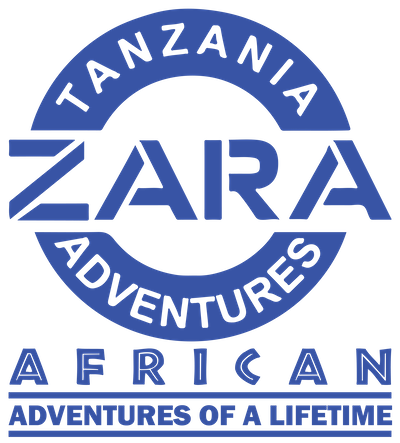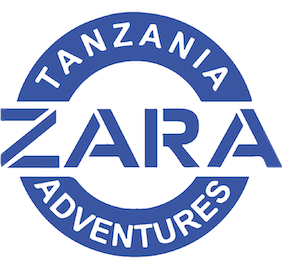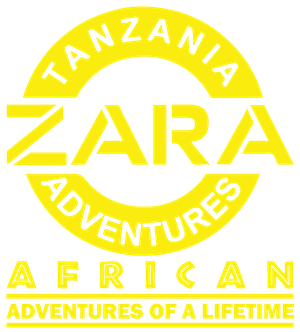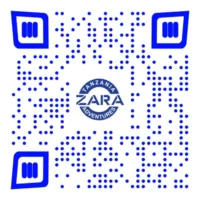Frequently Asked Questions
The number and variety of restaurants is improving. In cities and towns with some tourism traffic (Dar es salaam, Moshi, Arusha, Karatu, Zanzibar town) you can find good Swahili, African, Indian, Chinese and Italian restaurants. Many older restaurants serve typical English food but the variety is widening and many other influences are appearing in menus.
Should I give a tip?
Tipping is not a local custom in Tanzania; it is common only amongst tourists and expatriates who live in the country. Giving monetary gifts to friends or relatives is common, however, both in the city and in the countryside. As tourism is growing in the country locals who work in the tourism industry are getting used to the notion of tipping and sometimes even expect a tip from clients.
Tips will vary depending on the length and complexity of the trip, the number of staff on the trip, and the number of clients on the trip. Generally, groups like to meet together before the end of the trek to discuss how much they would like to tip each staff member based on their individual trek experience. See our suggestions for tipping.
Of course we can! You can get the first idea of ZARA Tours on this corporate website, our blog, our hotel websites (Springlands Hotel, Highview Hotel, Tanzania Wildcamps), and on Adventure Travel Media Source. Further documents about ZARA you can get here.
Then, please contact us and we are happy to assist you!
Many texts state that Kilimanjaro is “easily accessible”. However, you should not underestimate this mountain. There are no technical mountaineering skills required, but general fitness is necessary. However, the biggest problem for climbers is the effects of high altitude, which seem to be unrelated to fitness, age, or gender.
It is a good idea to start some physical training prior to the trek, which might include aerobic cross training and hiking to familiarise your body with the rigors of the trek. The fitter you are, the easier the climb will be for you. Determination and will power is another important factor.
Please use the main menu on the left to browse through our section “Resources>Health information for Kilimanjaro climbers”.
If you have any particular medical problem please consult with your doctor before you come to Tanzania as to the medication that you should bring on your trip. This also applies to your own personal first aid kit.
Again we can provide you with a suggested list for your personal first aid kit. All trips will have a basic first-aid kit but it will not contain any prescription drugs. There are limited medical supplies in Tanzania and they are mostly found in the capital Daressalaam only. You will not be able to purchase them in the countryside when on the trip.
There are western Doctors who provide medical services to travelers. These professionals can be contacted in the case of an emergency or for a general inquiry.
Make sure that you have travel health care insurance.
It should at least cover:
Vehicles used are generally Toyota Land Cruisers or Land Rovers, as they are most suitable to the terrain. For larger groups, we use 4WD buses as it is more convenient for our clients to be all together in one vehicle only, and it is also more economic and better for the environment.
Most of the drivers we use are full-time employees. They have been trained by us in customer relationships, tourism-related topics, environmental issues, and vehicle maintenance. They are very familiar with the routes we take. Some drivers, especially on the less frequented routes are contract drivers, who work part-time for the company. These drivers are always experienced, reliable, and very knowledgeable of the areas they will take you.
The official currency of Tanzania is the Shilling. Smaller amounts of money are usually paid in Shilling, whereas larger amounts of money are paid in US$. In September 2009 1 US$ was worth approximately 1,320 Shillings. Money can be exchanged at the Bureaux de Change which can be found at any larger town and in the airports. Make sure that they change your money at the rate which is written in front of the bureau.
Travelers from the US are advised to bring US$ in currency; make sure that the bills you bring are dated 2003 or later, as currency dated earlier may be rejected by currency exchange places. Also, we at ZARA won’t accept US$ bills that have been issued before 2003. You will get a better exchange rate for 50 and 100 dollar bills than for smaller bills. There are several banks where you can use ATMs. Visa card is the most widely accepted credit card.
Travelers from Europe are advised to bring Euros (or British Pounds, Swiss Francs). They can be changed to Shillings at all Bureaux de Change and you save the costs for changing twice – first from Euro to Dollar at your country of origin, and then from Dollar to Shilling in Tanzania. You can use international credit cards, preferably a VISA card, at the ATMs of most banks. At Barclay’s bank (Moshi, Arusha, Zanzibar, Dar es salaam) it is even possible to use your EC debit card.
Only hotels, restaurants and tourist shops of higher category accept international credit cards; when paying small amounts in US$ rather than Shilling, in most cases you get a worse exchange rate. Local shops accept Shillings only.
For safaris, you can choose the standard of accommodation. The cheapest and simplest option is basic camping.
Of better standard are the ZARA properties (Springlands Hotel, Highview Hotel, Tanzania Wildcamps) and the Wildlife lodges, which are 3-star category. These hotels are clean and comfortable. The tents at the Wildcamps have en-suite toilets and hot showers.
The ZARA properties provide the best value for money in Tanzania and provide reasonable class European service.
If you expect 5-star luxury accommodation, it is best for you to choose luxury lodges.
It is important to keep luggage to the barest minimum when on trek, as this will ease the burden of the drivers, vehicles and porters. Baggage should be of the round squashy type rather than hard suitcases that are difficult to fit into jeeps. Try to use something that is both lockable and waterproof as luggage can often end up sitting on the roof of the vehicle.
It is a good idea to bring another smaller bag so that unwanted clothes can be kept in it at the hotel when you go on a trek. This also helps to keep city clothes clean and free from dust. You should also bring a small day pack which can be carried while hiking or riding or can be readily accessible when you are traveling in the vehicles on long drives.
On camping trips, all equipment will be provided except for a 4-season sleeping bag. You do not need to provide any other camping gear; only personal belongings. See our Kilimanjaro packing list and Safari packing list.
It should be noted that the luggage limit per person on domestic flights is 15-20 kg per person (checked-in and hand luggage).
On your inbound flight, don’t check in items that you absolutely need (such as medicines), as it is not uncommon that checked-in luggage gets misdirected and arrives in Tanzania a couple of days after you. It is better to have such items in your hand luggage.
Around 80% of climbers choose the Marangu Route (5 or 6 days), which is commonly referred to as the “Tourist” or “Coca Cola” Route. The rest usually goes for the Umbwe, Rongai, or Machame Route (6 or 7 days). The other two routes (Shira and Lemosho) are far less frequented and therefore allow for a more remote and natural experience.
Please note that many of the routes meet on a mid-way point and there are only three routes to the summit.
Please see our route comparison table, read the descriptions of the routes, and ask us if you have any questions.
Interesting art and gifts can be bought at the Art and Craft Shops at the Springlands Hotel and Highview Hotel at fixed prices.
There are also many smaller curio shops and local markets in the towns. We want to encourage you to buy at local shops to support local economies. Be careful when buying antiques that you receive a stamped certificate from the seller in case you are asked to prove your purchase at the airport. Sometimes in the countryside, you will be offered goods from local countryside people for sale. When buying souvenirs, you should always bargain with people.
Please, do not buy souvenirs made from endangered indigenous wood such as ebony, Bamba Kofi, or mangrove wood, and souvenirs that encourage the destruction of our flora and fauna such as pieces of corals, large seashells, turtle shells, or other primed or living animals.
What’s the best time to do a safari?
When is the best time to climb Kilimanjaro?
Where can I get a visa for Tanzania?
Where in Tanzania is Moshi/Kilimanjaro and how do I get there?
Who will be my guide?
Will I be able to speak to people in English in Tanzania?
Safaris are possible at any time of the year. We adapt the exact locations for game viewing to the yearly migration of wildlife. For instance, in the months of December to March, the animals are rather in the Eastern part of the Serengeti, and in April and May, they move to the Western part. Other National Parks don’t have any migration scheme at all.
For safaris, there are two rainy seasons: The November rainy season typically starts at the end of October and has short (maybe just an hour of rain every three days), but strong rains. During the April/May rainy season, it is possible to have 1-2 consecutive days of nonstop rain. Some roads may be impassable during the rainy season.
Please notice that at ZARA, the complete months of October and November, April, May, and from the 1st – 15th of June are low season and we offer discounts and special itineraries!
During peak season (Christmas to middle of January) prices are highest and it might be hard to find hotel rooms.
Kilimanjaro can be climbed throughout the year.
January to March is a very good month with mild temperatures and almost no clouds in the morning and late afternoon. During the day, however, there might be few short rain showers or little snow on the summit. The main rainy season starts end of March and lasts until the end of May. For Kilimanjaro climbers, this means that clouds may block visibility and there might be heavy rains on the lower altitudes and snow on the summit. June, July, and August can be cold, but visibility is usually very good. Temperatures rise in September and October, however, during this time of the year, there is often a belt of mist on the middle altitudes, leaving the summit’s peak through the clouds. November and December usually have perfect visibility in the nights and morning, but short rains during the day and thunderstorms in the late afternoon are common.
For Kilimanjaro climbers, a factor to take into account is the full moon – it is a unique experience to climb the roof of Africa lit under the shining moonlight only without having to use headlights.
Where can I get a visa for Tanzania?
Where in Tanzania is Moshi/Kilimanjaro and how do I get there?
Who will be my guide?
Will I be able to speak to people in English in Tanzania?
Generally, everyone entering Tanzanian territory must have a tourist visa, the price is $100 for U.S. passport holders, US$75 for Canadians, and $50 for EU and most other passport holders. The best idea is to obtain a visa from the Tanzanian Embassy in your country of origin.
Please take a look at our section about visas.
Please see our page: “Getting to Moshi.
All groups and individual travellers will be provided with an English speaking Tanzanian guide. Some of the guides also speak Spanish or German. They are trained and experienced in leading trips and knowledgeable about the fauna, flora, and many more aspects of their country. Often they become lifelong friends with travelers. Interactions with staff are often the highlight of people’s trips. It is a great way to get to know the real-life of Tanzania.
The official and spoken languages of the country are Swahili and English. Many people have English as their second language as they were taught this at school. All Tanzanian working in the tourism field can communicate in English.
In the countryside, or when communicating with children, local women, or individuals of lower school education, it might, however, be difficult to speak in English.
It is appreciated by locals if travelers can speak some words in Swahili. A few words are surprisingly easy to master. It is a good idea to spend a few dollars to purchase a Swahili phrasebook.




















